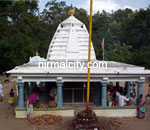Adilabad Kala Ahsram
Adilabad Kala Ashram Gallery-3
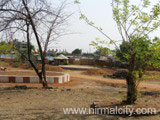 Adilabad Kalaasram
Adilabad Kalaasram
 Adilabad Kalaasram
Adilabad Kalaasram
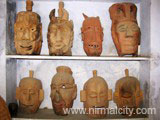 Adilabad Kalaasram
Adilabad Kalaasram
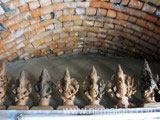 Adilabad Kalaasram
Adilabad Kalaasram
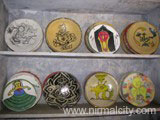 Adilabad Kalaasram
Adilabad Kalaasram
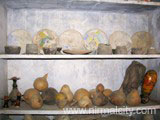 Adilabad Kalaasram
Adilabad Kalaasram
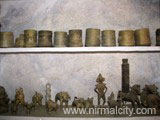 Adilabad Kalaasram
Adilabad Kalaasram
 Adilabad Kalaasram
Adilabad Kalaasram
 Adilabad Kalaasram
Adilabad Kalaasram
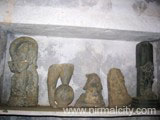 Adilabad Kalaasram
Adilabad Kalaasram
 Adilabad Kalaasram
Adilabad Kalaasram
 Adilabad Kalaasram
Adilabad Kalaasram
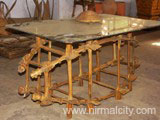 Adilabad Kalaasram
Adilabad Kalaasram
 Adilabad Kalaasram
Adilabad Kalaasram
 Adilabad Kalaasram
Adilabad Kalaasram
 Adilabad Kalaasram
Adilabad Kalaasram
 Adilabad Kalaasram
Adilabad Kalaasram
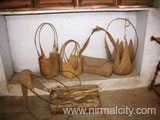 Adilabad Kalaasram
Adilabad Kalaasram
 Adilabad Kalaasram
Adilabad Kalaasram
 Adilabad Kalaasram
Adilabad Kalaasram
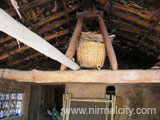 Adilabad Kalaasram
Adilabad Kalaasram
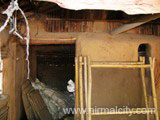 Adilabad Kalaasram
Adilabad Kalaasram
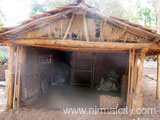 Adilabad Kalaasram
Adilabad Kalaasram
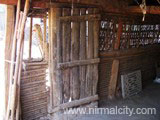 Adilabad Kalaasram
Adilabad Kalaasram
 Adilabad Kalaasram
Adilabad Kalaasram
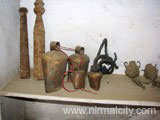 Adilabad Kalaasram
Adilabad Kalaasram
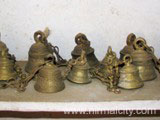 Adilabad Kalaasram
Adilabad Kalaasram
 Adilabad Kalaasram
Adilabad Kalaasram
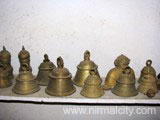 Adilabad Kalaasram
Adilabad Kalaasram
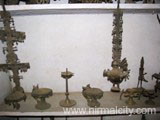 Adilabad Kalaasram
Adilabad Kalaasram
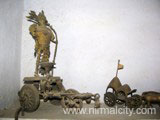 Adilabad Kalaasram
Adilabad Kalaasram
 Adilabad Kalaasram
Adilabad Kalaasram
 Adilabad Kalaasram
Adilabad Kalaasram
 Adilabad Kalaasram
Adilabad Kalaasram
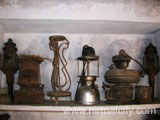 Adilabad Kalaasram
Adilabad Kalaasram
 Adilabad Kalaasram
Adilabad Kalaasram
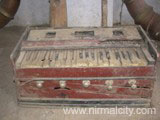 Adilabad Kalaasram
Adilabad Kalaasram
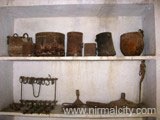 Adilabad Kalaasram
Adilabad Kalaasram
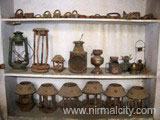 Adilabad Kalaasram
Adilabad Kalaasram
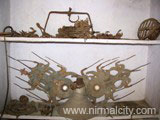 Adilabad Kalaasram
Adilabad Kalaasram
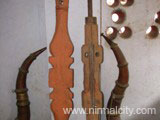 Adilabad Kalaasram
Adilabad Kalaasram
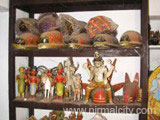 Adilabad Kalaasram
Adilabad Kalaasram
 Adilabad Kalaasram
Adilabad Kalaasram
 Adilabad Kalaasram
Adilabad Kalaasram
 Adilabad Kalaasram
Adilabad Kalaasram
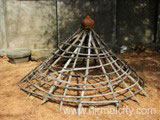 Adilabad Kalaasram
Adilabad Kalaasram
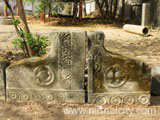 Adilabad Kalaasram
Adilabad Kalaasram
About Ashram
 Kala Ashram
Kala Ashram
We are moving through an age where life is sandwiched between ancient heritage and modern technology. It is becoming difficult for us to make a choice.
Kala Ashram is striding towards a new era in preservation of the ancient and adopting it to the modern lifestyle.
Founded
on thursday 7th June, 1979, Kala Ashram had a modest begining. Today it has grown into a sprawling two acre land at Tantoli Road, Adilabad, thanks to the support of wellwishers, local people and the State Government.
- Work related to love for nature and environment.
- Work related to Indian culture and heritage.
- Creativity by arousing aesthetic sense with respect o Indian Heritage.
- Traditional science and technology.
Kala Ashram works to bring harmony between
- Artisan and Artist d to love for nature and environment.
- The ancient and the modern.
Ongoing Programmes
- Research and study of all ancient techniques and science, tradition and art forms.
- Collection and preservation of all articles of use in and around Adilabad
- Workshops to introduce ancient technology and its usage in modern context
- Revival of folk dances and folk music. .
Future Plans
- Establishing a permanent exhibition / museum of all articles.
- Setting up "Homes" that function as museum, house, workshop and shop for twelve or more artisans which would also include teaching of the techniques, life-styles and economics of that particular art form.
- "Ranga Sthal", an open air theatre, a platform for revival of Folk music and Folk dances.
- "Granthalay", a library of rare books related to all the aspects mentioned above.
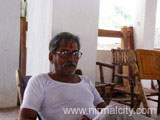
The Founder
Sri Ravindra Sharma fondly called as "Guruji" is the founder of Kala Ashram. Born and broughtup at Adilabad, his wanderings around helped him to get an in-depth knowledge of the culture, heritage and economy of that area. Along with like-minded people and friends he established his brain child Kala Ashram in 1979.
Sri Ravindra Sharma himself is well versed in fourteen different art forms. He is an inspiration for hundreds of artisans and artists from all over the country who come to Kala Ashram to learn more about their art.
Kala Ashram
Which was started as an experiment to re-establish the customs and culture of the region has today grown into a training centre for hundreds of artisans from all over India.
-----------------------------------------------------------------------------------------------------------------------------
Kala Ashram - Detailed Description
Which was started as an experiment to re-establish the customs and culture of the region has today grown into a training centre for hundreds of artisans from all over India.
Three men, all clad in dhotis, entered the Bapu Kuti. The oldest of the three stood sharply erect. His movements were slow and graceful. Adjusting the angvastra on his shoulder the man wandered about, quietly taking in the furniture-free spaces of the Kuti. One of the younger men bounded about excitedly exclaiming and admiring tiny details. His face was lit by a luminous smile that spoke of an irrepressible enthusiasm for life. The other young man wore a sombre expression and an improvised turban of crumpled, aging white cloth. Long, uncombed locks escaped from the turban, tumbling onto his neck. He could pass for a fledgling sadhu.
The older man, the one they called ‘Guruji’, nodded admiringly as he completed his tour of the Kuti. He did not know much about Mahatma Gandhi. Though he lived less than half a day’s bus-journey away from Sewagram, ‘Guruji’ had never felt the need to visit the famous ashram. Yet, this simple home, made from local materials, complete in its simplicity, struck a chord in him. The Kuti interested him more than the proceedings of an international conference, to which his chelas had dragged him.
Amid the crowded schedule of sessions on world peace and economy of permanence, I slowly got acquainted with Guruji, and found that he is otherwise known as Ravindra Sharma. His frequent references to a place called Kala Ashram began to weave
a spell of wonder. The two young chelas turned out to be renegades from the Chennai IIT. Now the mystery deepened further.
A year later, in the winter of 1994, I took up their invitation and made my way to Kala Ashram in the company of Uzramma, a member of the Kala Ashram fraternity. Our bus, from Hyderabad, arrived in the town of Adilabad in the pitch dark houy befoye dawn …
Growing up with Budubudukalodu and Gosamolu
Ravindra Sharma clings to memories of songs which greeted the dawn in his childhood. Adilabad was a smaller town then. There were few people and hardly any noisy modern gadgets. The nights could be deathly quiet. Little Ravindra would sometimes lie awake and wait. Then, while all of nature rested, the rhythmic’ duk, duk, duk, duk … ‘ of a small hand-held damnl would arise faintly in the distance.
The mysterious and hazy fonn of the Budubudukalodu would appear from the direction of the cremation ground and disappear down the road, to the steady beat of his damru. The boy understood that the Budubudukalodu was roaming through. the town warding off ghosts and bidding farewell to the spirits of the night. It was now about three in the morning.
A little later the Gosamolu, a husband-wife team, would pass by singing bhajans to an ektara. Then, just before the first rays lightened the sky, came the Haridas. He danced with ghungaroo on his feet, gently making music with an earthen pot on his head, singing Rag Bhairavi. It was the Haridas who awakened the gods from slumber to greet the new day.
By then the townfolk were stirring and so the Haridas was the first minstrel to get bhiksha. Well into the morning, with the sun shining bright, came the Jangam, who could be a single man or a pair or trio, singing the praise of Shiva. They too collected bhiksha as they. Went along Closer to noon came the Kathi-palodu, a magIcIan WIth ammals, usually a bullock or bear. And so on, as the day moved full circle a variety of singers, minstrels, water-di.riners, m~dicine m.en and travelling merchants filled the hfe of Adllabad wIth colour, song and meaning.
Once every fifteen days or so, the then resIdent Budubudukalodu and the Gosamolu would come around for bhiksha before moving on to another town or village. And alert ears like little Ravindra’s, would eagerly listen out for the BUdubudukalodu and Gosamolu-to catch a glimpse of them in daylight.
As dusk pulled the curtain on yet another day somewhere in Adilabad young people were dancing the Kolatam in a joyous group. At other times rapt audiences watched the enactment of stories from the Bhagvatam or Ramayana.
Minstrels and Pauranic story-tellers have enhvened villages and market towns like Adilabad for centuries. A particular Budubudukalodu or Gosamolu may pass away but the continuity of their dawn music was unbroken, undisturbed. To little Ravindra it seemed as perennial as the chirping of birds and the wind in the trees. In different ways each of the minstrels linked everyday life with the here after, with the infinity of the cosmos. But even as Ravindra watched the Gosamolu and his like were disappeanng.
By the time Ravindra looked about at his world with the full awareness of an adult, Adilabad was waking to a silent dawn. Most people may have taken this as being inevitable in the flow of time. But this silence hurt Ravindra. He knew that with the minstrels an entire civilization, a way of life, was fading. It was leaving behind an eerie vacuum. The standardized, long-distance broadcasts of All India Radio were no substitute for the presence of a Gosamolu. Now life and art, art and beauty were moving further and further apart.
Once upon a time in Adilabad
Once upon a time the dense Dandakarnya forest covered the space where the roads and buildings of Adilabad now stand. It was through these parts of central India that Lord Rama and Lakshman are believed to have wandered searching for Sita, in the epic tale of Ramayana. This legend is faithfully and lovingly kept alive. In many villages people still enact episodes from the Ramayana or other Pauranic legends. This means more to them than the material reminders left behind by the ebb and flow of time, like the ruins of a Jain monastery which lie near the place now known as Adilabad. The tumble of masonry and broken idols is ignored by most local residents.
What the people of Adilabad do know is that some 400 years ago two Vaishnav muths were established in the area. The present market settlement of Adilabad emerged around the walls of these muths about 150 years ago. At the turn of the twentieth century, Adilabad was a humming urban centre with the clickty-dack of thousands of handlooms. A wide variety of craftsmen fed the local economy with their products. In those days the Nizam of Hyderabad ruled the area. The British influence was fairly negligible. The first modern roads and railway lines began to be laid in this region some time in the 1940s.
This construction attracted merchants and entrepreneurs from far corners of the country. Thus, young Lahori Ram Sharma, of Layalpur in the Punjab, came to seek his fortune in Adilabad. Some day, he planned to return home wealthy and live among his own. But history had other plans. While Lahori was working as an engineer,.laying railway lines, the British were in the process of leaving a~~ two separate nations waited to be born. Suddenly Lahoris home lay in a ‘foreign’ country. Shortly before the formal declaration of Partition and the formation of Pakistan, in 1947, Lahori’s entire family made the long journey south to Adilabad, carrying just the bare essentIals.
Almost half a century later the aging Lahori and his brother would still tell this story with a deep sense of relief. Other families who waited till much later were caught in the madness of brutal communal riots. While retaining their distinct flavor of speech and dress, the (Lahori Ram) Sharmas slowly merged into Adilabad and, setting wistful regret aside, got on with life. It was into this joint family that a son was born to the second Sharma brother in 1952. They called him Ravindra.
The boy was less than five years old when the family noticed that he had an intense preoccupation with creating images and playing with colours. Little Ravindra spent hours in the homes of the ‘low-caste’ Nakashi artisans, watching them carve and paint wooden figures. After such visits, Ravindra’s grandmother always poured bucket of water over him, for purification, before letting him into the house.
In those days, Adilabad was still a sleepy little town, though it is now a district headquarter. The local Narayanswami and Gopalkrishna muths still played a central role in the annual cycle of seasons and festIvals. The Mahant of each muth would emerge outside only four or five times a year to seek bhiksha among the people of Adilabad and surrounding villages.
These were days of great excitement for all children. But Ravindra’s absorption in the elaborate paraphernalia of decorations and torans, which honored the Mahant, was quite extraordinary. He carefully followed the Mahant’s ceremonial procession, passing under the beautiful torans in each neighbourhood. Householders would welcome the Mahant into their homes, reverentially wash his feet and then place some grain in his jholi. That token bhiksha was accompanied by a promise of how much grain the household would contribute to the muth that year.
On Dussehra the Mahant of the Gopalkrishna muth would head a procession sitting in a palki. Virtually the whole town would join the procession which went to a particular shami tree on the outskirts of the town. There the tree would be worshipped. Then people would pluck some of its leaves and the procession would head back to the muth. The leaves were treated as symbolic of silver coins and exchanged among the citizens of Adilabad. The Dussehra evening was spent visiting neighbours and paying respects to the elders and gurus. Decades later, Ravindra still had vivid memories of these scenes. He treasured the mental images of brilliantly-coloured turbans in many different shapes.
At the age of eight, Ravindra found a teacher in the traditional art of wielding a lathi and was an expert by the age of twelve. This earned him the title of ‘Guruji’ and soon he became a young personality to be reckoned with. The title stuck for life and, in future, people of all ages always addressed him as ‘Guruji’. At sixteen he was running his own akhada or gymnasium. Ravindra also discovered that he had an uncanny skill for telling people’s fortunes just by studying their face. Soon people were asking him for sacred threads and mantras that would solve their problems.
At that time the economy of Adilabad, like many such urban centres, still revolved primarily around local resources. Those who had land grew their own grain and some cotton. They depended on the market for purchasing tea, jaggery, salt, etc. But as Ravindra grew up, the economy and society of Adilabad were changing rapidly.
Old trades and industries were dying. The products of local artisans were being replaced by mass-produced goods of the modern ‘market’. These decisive changes brought to Adilabad new residents who had no hereditary links with either the muth or the Budubudukalodu or Gosamolu. New equations of commerce and power were taking shape. Eventually, by the late-80s, the annual Dussehra day procession was led not by the Mahant but by the District Collector.
Gale-force winds of change
These changes baffled and disturbed Ravindra, but he was not quite sure why. He concentrated on exploring life around him and evolving a distinct personality of his own. Ravindra completely gave up the western style pants and shirts which all the other male members of his family wore. He took to wearing a cotton dhoti and kurta and applied elaborate bottu on his forehead.
Most of his time outside school was spent roaming the villages around Adilabad in search of craftsmen, sculptors, painters and other artists. He loved to watch them at work and tried to learn their skills. Along with his closest friend, Nishikant, Ravindra spent long days lost in the mystery and beauty of the ruins of the old Jain monastery. At that time the ruins were still rich with statues and other stone carvings. Later, as Adilabad became commercially busier and more outsiders came into the area, the ruins were slowly plundered of the pieces that had been lying undisturbed for almost a thousand years. Ravindra and Nishikant would often take a small bullock cart and set out in search of the 108 devalayas that once existed in that region. Over the years they located sixty. Ravindra remembers these wandering days with a sense of almost magical happiness. Wandering into a village the boys were always quickly adopted by someone, fed, housed and even given fodder for their bullock. Ravindra recalls fondly that their hosts were equally delighted by these visits. In village after village, they found a living culture of ‘atithi devo bhavah’, which treated the guest as a God.
There were some ground rules to this wandering. Ravindra and Nishikant never returned to Adilabad by the route they had travelled out. They ate in any village only after making at least one new acquaintance or friendship. As Ravindra outgrew his teens and acquired a muscular physique, this process of making friends took a while.
Here was a man of medium height with heavy shoulders and a long black mustache. He wore a deep red tilak on his forehead and carried a saffron-coloured cloth bag. The moustache gave him the look of a tantric sadhu, some one who meddled in mantra jadu, like magic. That jhola, or bag, aroused suspicions. It could easily be filled with charms and tantric paraphernalia. And it didn’t help matters when this young man with a powerful presence asked people about old temples in the area. Perhaps he was here to steal idols or gold ornaments from the temple deities. So it took a while for young Ravindra to put strangers at ease. For some, getting to know him was a bit of an anti-climax since that jhola contained mundane things like a torch, tooth-powder, a lota and some sheets of paper.
At that time, in the mid-60s, many old social habits were still alive in these villages. When a traveller arrived he would rest at the village chabutra. The kotwal would greet the traveller and ask to which caste he belonged. The traveller would then be directed to his caste-brothers in that village, who took turns at feeding the stranger for as long as he stayed.
One village, Devapur, consisted entirely of people who lived on bhiksha. They roamed from village to village, telling stories and living on the alms people gave them. Each family had its own fixed terrain to cover and they did not encroach on another’s area. The multi-dimensional skills of these story-tellers had been cultivated over centuries. There was the Shakunjatak, who told fortunes with the help of parrots. These travelling fortune-tellers traced their lineage and knowledge back to Shakuni of the Mahabharat.
As Ravindra observed more closely, he learnt that a story-teller must also be a good instrument player, dancer and actor. People of the Sharda Kalu community acquired all these skills and told stories of local ancestral heroes and mythic figures in village after village. The session would begin late in the evening and as night melted into morning, tales of valour, adventure and the endless quest for eternal truths were enacted with fervour. In the old days, when they were secure in the patronage of their respective comunity, these bhiksha vritti story-tellers performed with the accompaniment of elaborate costumes and props.
The more he saw, the harder Ravindra worked at soaking up these fading cultural riches. He kept detailed notes on the various social customs, art forms and people he encountered. In some things, like the Kolatam folk dance, he was also an avid participant. One of his friends Kishtopanthalu, knew thirty-two songs each accompanying a distinct style of Kolatam.
In Adilabad, a grand old man called Yellapatata became Ravindra’s mentor. The sheer presence of Yellapa tata’s regal dignity was a joy for Ravindra. This aging artist taught him the wonders of colours and painting. Slowly, an informal ’school’ evolved around Yellapatata, with Ravindra as the star pupil. Often they would meet at the muth, which served as a natural adda, hang-out, for these artists.
As the twentieth century moved inexorably to its close the electronic transmission of images at cinema halls, and later television sets, began to take over. More and more people became merely spectators rather than being participants. Daily life became more mechanical and self-centred. Then the concept of bhiksha began to lose its power. Now the bhiksha vritti story-tellers began to seem like ‘beggars’. The traditional patrons faded out and none took their place. Besides, there were now fewer people interested in spending a five full evenings on live story-telling.
Ravindra could see that the flow of kaala, time, did not favour the old skills .. But still, he felt distressed that most artists were not able to evolve creatively with the times. Instead, the pressure and confusion of change brought greed to the fore. More and more material demands were added on to the ritual story-telling. Now the puja to the kul-devta, an essential part of the katha tradition, became very expensive. If the wedding of Rama and Sita was being enacted, a full dahej, dowry, was required from the village.
In the old days the performers had dealt with the village mahajan and decided which stories would be told and how much would be spent on the whole event. Now no one was clearly in charge of such matters. Or, as Ravindra saw it, ’sab chowdhry bane hue hain’, everyone had become self-important. Besides, now people were spending more
money on themselves and the immediate family. There was less and less set aside for collective social purposes.
These developments badly hurt the local craftsmen and artisans. These indigenous industries had rested on an intricate pattern of interdependence among artisans, and between them and society at large. Social customs and festivals were evolved to ensure the economic well-being of the artisans. For example, in Adilabad, there was a festival some weeks before Diwali in which groups of people went dancing in the streets and threw stones at the roofs of homes. This inevitably broke at least ten-fifteen tiles in each home. Then just prior to Diwali as people cleaned and painted their homes, these tiles were replaced. Each family would have the tiles made by the local potter. The festival became an excuse for not only cleaning and renewing the house but also giving business to the potters.
In this way, every festival required some new purchase from the craftsmen. The wives of potters, dhobis or barbers were often asked to inaugurate new works in the community or in a family. Their participation was considered auspicious. This also lent prestige to the artisan families. Instead of cash the medium of exchange was goods like grain, cloth and other necessities. A close interdependence was thus ensured between the farmer and the artisan.
Now, as Ravindra watched, the artists and artisans whose skills had been handed down from generation to generation, whose lineage stretched over two millennia, moved towards a slow collective death. Art forms and crafts that enriched everyday life, were being swallowed up by the all-powerful flow of kaala. To Ravindra it seemed as though, one by, one the many different kinds of light and colour essential for a full life were being extinguished. This approaching darkness appalled him. With it came a pervasive feeling of anxiety and a nagging heartache.
As he grew more worldly-wise, Ravindra realized that this vanishing act was part of something powerful that was seeping into the innards of Adilabad. This force recognized no borders. It was a gale which came from far away, knocking down everything in its path. Some called it modernization. Different ways of living were being blown away in a race to get ‘ahead’. But ahead of what? Ravindra asked himself. As he looked around life seemed to get duller and somehow alienated.
Even a romantic dreamer like Ravindra had no illusions that he could change the course or speed of this storm. After all, who can fight kaala itself! Now one question obsessed him. How should he live amidst all this change? What should he do?
Ravindra nurtured these questions and kept wandering in villages around Adilabad, in the spirit of a bhikshu, living on whatever hospitality was spontaneously offered to him. Often he was invited to share the meagre meal of the impoverished craftsmen or peasants. Thus, he lived with, and learnt from, scores of different craftsmen - potters, goldsmiths, drum-makers, leather craftsmen, weavers and sculptors. When night fell someone would take him under their thatched roof, or he would curl up under a tree in the village centre.
A twenty-year oath
Once, during winter, Ravindra was staying overnight at the home of a metal craftsman. As the night deepened it grew bitterly cold but his host had no covering either for himself or his guest. The only tattered blanket in the home was covering the man’s sick wife. The host stayed awake to keep a small fire going and invited Ravindra to. lie close to the warmth. Lying awake, huddled before the flickering flames, Ravindra made a vow to himself that night. He would devote twenty years of his life to helping such craftsmen. No one could hold back the tide of time but he would build a sanctuary for them, a place to seek solace and work at their craft-a Kala Ashram.
Since his early wandering days, Ravindra had felt the need to save the memory, save the fading practices and crafts. So he took copious notes about everything, documenting even details about the toys of the region how they were made and the games children played. Creation stories among the different communities and castes particularly fascinated him. If nothing else, Ravindra thought, the Kala Ashram would salvage some token remnants of the fading civilization.
Much of this documentation was on loose sheets of paper which Ravindra had piled together and put on a shelf at home. No one in the family knew quite what Ravindra was always scribbling or what its significance was. So, while Ravindra was away at college in Hyderabad, the papers were gradually used for assorted purposes, such as toilet paper for the babies of the house and to pack meals. By the time Ravindra noticed what was happening most of his documentation, like its subject, had also vanished.
In 1970, much to his family’s relief, Ravindra managed to pass the tenth class exam which made him a high school graduate. He was quite mystified with his own success. But he had somehow managed to momentarily curb his dread of Maths and English, the phirangi bhasha, foreign language. By then he was no longer telling fortunes or dabbling in the realm of jadu and mantras. It just didn’t feel right and gradually this occult dimension faded out of his life.
Ravindra was now ready for some modern qualifications. So he joined the School of Fine Arts and Architecture in Hyderabad. There he became obsessed with the search for a distinctive artistic style. He restlessly roamed the streets of Hyderabad ‘like a dog’.
‘Why modern art?’ he asked himself. ‘Why shouldn’t we work within our tradition and do something new in that?’ He also embarked on an emotional journey that was not fully within his grasp or control. Soon, he was overwhelmed by a terrible restlessness that was both an artistic and emotional crisis. He felt dizzy and at one point was bedridden for two weeks. When he first arrived in the metropolis, Ravindra weighed seventy kilograms and had the body of a pahalwan, wrestler. Within a year he was a pale image of his old self.
Through all these agonies, the twenty-year resolve remained firmly in place. As soon as he returned to Adilabad, Ravindra began the search for a place to locate the Kala Ashram. Since the group of friends who were committed to this idea had always interacted closely with the mahant and swamis of the muth, they first approached them to spare a little space. The management of the muth offered them a structure which was leased out to an Urdu school. If they could get the Urdu school out of there, the structure was theirs. Ravindra would have no part of this.
Just across the road from the Sharma household was an old, high-roofed structure that had once housed a cotton ginning plant. The building stood on a large empty compound which had its own well. The location was suitable and with little persuasion the owner agreed to rent the structure. Thus, in 1979, the loose group of young friends and elders who shared Ravindra’s ideal started the Kala Ashram.
Many shared in the evolution of the Kala Ashram dream. But Ravindra had firm views on all the essentials and insisted on running it his way, as the guru. It could also be run as a collective of friends, but Ravindra was convinced that this would not work. In a guru-shishya relationship there is a clear understanding about following someone and thus a stronger sense of direction.
Guruji also resolved not to ask anyone, either local people or government, for funds. He wanted to stay as far away as possible from government’ development’ projects. Those who helped to form the Ashram promised to give one per cent of their income for its expenses, which did not amount to much.
There were many people in Adilabad, outside this inner circle of the Ashram, who were willing to contribute funds. But Ravindra would not take money from just anyone. Money given as charity, as a favour or begotton by some trick was unacceptable. Only the money of those genuinely committed to the idea, who shared its ethos, was acceptable. The scale and scope of the Ashram was left to depend on how much could be mobilized within this criteria of acceptability.
In 1982, the outside world beckoned once again and Ravindra took off for Baroda to study metal casting at the M.S. University. The Kala Ashram was left in the nurturing care of Nishikant and Yellapatata.
Amid the mostly city-bred students, Ravindra was the odd one out. Other students did not wear dhoti-kurtas or speak unadulterated Hindi with such perfect diction. Judging by his attire and traditional idiom, derived from the Vedas and Pauranic literature, many fellow students suspected Ravindra of being ‘an RSS type’ or at any rate much too ‘Hindu’ for the cosmopolitan atmosphere of the art school. So initially Ravindra made few friends.
In this lonely state the angst, or ‘ghosts’, that had plagued Ravindra since the Hyderabad days returned in full force:
Even after going to Baroda for a year and a half I couldn’t work. Many times I thought of going back to Adilabad. But I was irked by a friend who said, What have you ever done?’ That egged me to stay on and work. For six months I spent a lot of time standing at a banyan tree, saw it change leaves and wondered why we are not able to self-renew like it does. Then I abandoned all the old ideas. [What matters is] to focus on one’s experience and to express it, to give it form
Then one day, as I lay resting, I suddenly had a flash. It was 4 a.m. but I got up and went to the school and started working, making different shapes. These were appreciated and bought by someone. That gave me a push and then I started really working. I went back into my childhood and asked myself,. are we creators? I could recall things from when I was four years old. I remembered making objects with clay, colour threads and metal pieces. I realized that this was my own, original work. Everything else I had picked up and learnt. I gradually built up from that and built back to the present.
Now Ravindra found a new interest in other artists’ work. He developed a special admiration for Nasreen Moharnmedi, an artist of rare genius who then taught at the M.S. University. ‘She (Nasreen) loved my work. For a long time she kept putting off coming to see my work. When she finally came, she gave it full attention. She taught me how to look at work.’ This approval and support boosted Ravindra’s spirits and work. Such interaction gave a maturity and richer context to Ravindra’s favourite question. What is art? Now he longed to go home to Adilabad and stay put.
Kala Ashram as sanctuary
Returning to Adilabad, Ravindra devoted himself full-time to the twenty-year ‘mission’ of the Kala Ashram. At last ‘Guruji’ was back where he belonged-his energies somewhat tapered and mellowed. The joint family household of the Sharma clan welcomed him back into its fold and set about arranging his marriage. The bride hailed from a Punjabi family settled in Gujarat. A quiet, gentle presence, ‘Bhabhiji’ of the entire Kala Ashram clan, she merged into the background.
Ravindra’s life revolved around those who sought his company and shared a heightened sense of beauty in everyday existence. Ravindra had learnt through his travels in villages that the experience and realization of beauty was an intrinsic part of life, not a symbol of pleasure or something to be seperately ’sought after’. So now, young people flocked to him for he helped them to see beyond the mechanical repetition of rituals and instead understand the symbolic and metaphysical significance.
The washing, clothing and dressing of an idol or shivalingam is an aesthetic experience which prepares, creates the atmosphere in which we pray. Or perhaps this experience in itself is an end, the experience of beauty, saundarya bhav? After all we had nine kinds of bhakti, why then did we need to worship idols?
Over the years the Kala Ashram accumulated a collection of local artifacts. There are silk embroideries of the Mathurias, various wooden deities, ceremonial headdresses of the Gonds, jewellery in cast silver or brass, local tools, implements, household vessels and musical instruments. Some of these are old pieces collected by Ravindra and others have been commissioned to be made in the traditional way.
Since the Kala Ashram can only house a ‘living’ museum, this collection is like a magnet for craftsmen and artists of traditional communities. Since most of these artifacts are no longer available in society at large, some come to Kala Ashram to borrow them for use at ceremonial occasions. Others come to work and replicate these, now rare, artifacts. Thus, Kala Ashram has become a repository of peoples’ history. It fulfils some of the functions which the Nakashis, traditional story-tellers, once performed-like repairing the old picturized story scrolls or painting new patts if necessary. Some craftsmen and artists come just to hang around, be together and sometimes work on a particular piece with ‘Guruji’.
The Kala Ashram has also been enriched by the regular presence of children, exploring and experimenting with their creative energies:
There is no imposition. If they wish to they can learn about traditional forms and methods or they can work entirely with their own imagination without any ‘instructions’. I realized that that’s all you should do with children-let them do their own thing, express without limits and outer influence. They can discover formal stuff later … My point of resolution with the self became my starting point with children when I taught them.
What is a painting? It is the division of a space by some lines. When you begin to add rules to it, it becomed an illustration, that’s not creative painting.
As the years sped by, the twenty-year resolve of Kala Ashram found realization in many forms, which were also scenes from the life of Ravindra Sharma.
There he was as art teacher in a special government school for Kolam tribal children. This was the start of his involvement with the government. Shortly after he returned from studying in Baroda, the then Deputy Collector of Adilabad urged Ravindra to take on the job. Of course ‘Guruji’ refused a job with the government. But he did want to teach the children. So he did the work, not for a salary but, for an honorarium of Rs 600.
Meanwhile,Modernity continued its assault on Adilabad. No matter how much he trained himself to act, not react, Ravindra was disturbed to find odd lumps of clay and other aesthetic horrors passing for Ganapati idols at the time of Gansesh Utsav. Thus, Ravindra began an annual practice of crafting eleven statues in all the various poses and moods traditionally associated with Ganesh. These were presented at an exhibition where he took pains to explain the symbolic significance of each idol. This way his way of educating the community about the traditional aesthetic and how its symbols encode messages for a richer daily life.
Eventually, as the decade of the 1980s neared its close, Ravindra abandoned this practice. Some people were now more interested in the politics that could be woven around those innocent idols. ‘Hindutva’ was the name of their political agenda and ‘Guruji’, they expected, would be a natural partner. So one day:
They called me to address one of their meetings, with a request ‘ki humko gali mat dena (don’t abuse us in your speech)’. At the meeting I started by asking. ‘Who is a Hindu here?’ There was a baffled silence. Then again I said. ‘All Hindus please stand up.
Since the gathering looked both confused and uneasy, Ravindra went on to explain that a true identity has its ingrained manifestations through symbols and a sense of self-confidence. So, a male figure carrying a damru and trishul with snakes wrapped around his neck and arms is instantly.’ identifiable as Shiva. A male figure holding a chakra on one finger is clearly identified as Vishnu.
‘What do you have (on your person) to show that you are Hindus?’ Ravindra asked his audience, most of them dressed uniformly in modern pants and shirts. Ravindra’s point was that. ‘if you have distinctive characteristics you don’t need to assert or shout out loud about who you are. It is only when you are not confident that you need to make all these assertions.’ It is only those who are alienated from their cultural roots and don’t know their own heritage who are making a noise about being Hindu, he added.
Ravindra was equally scathing with other ideological groupings. In 1990 some friends from Hyderabad invited him to work as art director for ‘Komram Bhimu’, a Telugu film based on the life of a tribal hero. Many members of the film unit belonged to the Marxist tradition and strongly disagreed with Ravindra’s love of the pre-modern, mythic and Pauranic traditions. Heated arguments inevitably erupted on the sets. ‘We were on location near a lake,’ he recalled, with a wicked gleam in his eyes. ‘When we would all go for a bath together in the lake I would loudly chant while bathing “… Jai Manu Smriti” … just to irritate them’.
It was not, however, all in jest. Ravindra is, in all seriousness, radically opposed to the modern view of the caste system as an unqualified evil. ‘If it had been a set of terrible oppressions, people would have never accepted it’, Ravindra argues passionately. ‘They would have killed the creator of such an idea.’ Yes, but didn’t Buddhism successfully challenge caste and was therefore run out of India? Ravindra countered. ‘If Buddhism died or was sent away, it wasn’t right for us. What makes me angry is the denouncing of traditional practices by phirangis, foreigners, or in the language and terms of phirangis. Yes there are problems today but why blame them on the whole of tradition. The caste system was not itself a problem. There was a richness in the multiplicity of functions, their inter-linkages, their aesthetic variety and intensity.’
Even though he grew up in the heartland of Andhra Pradesh’s vigorous Naxalite movement, Ravindra has remained untouched by such contemporary struggles. ‘Somehow my attention has never gone to such movements. Yes, my father kept in touch with local politics, he can tell you all about it.
From Ravindra’s window to the cosmos, the Naxalite seems like a speck in the complex interplay of darkness and light. Oppression and injustice are understood in the language of eternal principles. In one of the dusty alcoves of Kala Ashram stands a stark metal statue of the Chamunda. Ravindra’s hands have wrought a riveting effect in that naked female skeletal figure wearing only a garland of human skulls, belligerently crushing a corpse underfoot with scorpions crawling in her stomach. Chamunda’s burning rage and excruciating anguish leap at the observer, inducing an eerie chill. For Ravindra, the Chamunda symbolizes the power and anger of the nirbal, oppressed, ‘Hunger can create such anger, and destroy the powerful asura’.
For all his strong opinions favouring the ‘logic’ of caste or gender relations, Ravindra is not a rigid perpetuator of orthodoxy. He does not hesitate to befriend those who inhabit the fringes of social acceptance. Two of his closest friends in Adilabad are Dharamchand and Bela Jain, who fell in love in defiance of community norms. Dharamchand comes from a conservative Marwari family which was shocked when he chose to marry a Christian woman. It took many years, and perhaps the aura of Dharamchand’s prestige as a doctor, to gradually win acceptance for their marriage within the middle class of Adilabad. Ravindra was one of the few people who befriended them in their time of isolation. So he is like a member of their family and they are his loyal supporters.
But even friends like Dharamchand and Bela could not change the fact that within middle-class Adilabad few people took Ravindra seriously. This only changed, momentarily, when Ravindra and Kala Ashram were featured in a programme on national television.
The wide range of Ravindra’s interaction is due to his faith that a person’s views or opinions are inherently limited, often even shallow. But a civilization and culture are grand and deep, like an ocean. One must strive to see the difference between short term ‘issues’ and the larger truths which make a civilization.
I ask all who come here to leave their ‘mat’, ideology or dogma, aside. There’s place here for people of all persuasions-Gandhians, Marxists-Leninists, whatever .., You see your times and your surroundings from your own perspective. All of them were great people in their own context but we have to find our own way. All I ask is that you look within for your self and your path.
Arrival of new friends
On Dussehra day a lanky, broadly-smiling young man walked into the Kala Ashram. P.B. Srinivas, a graduate of the Chennai IIT and more recently of the Calcutta Indian Institute of Management (IIM), was staying at the Circuit House in Adilabad. It was one of the busiest days of the year at the Kala Ashram. A variety of preparations were under way, for the festivities of Vijay Dashmi. Srinivas was fascinated by the burst of activity he had walked into and waited patiently for ‘Guruji’ to lend him an ear.
Ravindra was not immediately impressed with the young man’s introduction. It appeared he was traveling to different parts of Andhra Pradesh on a fellowship from the Council for Advancement of People’s Action and Rural Technology (CAPART), in Delhi. This fellowship programme gave such young professionals a chance to spend time in rural areas and understand the problems of development first-hand. Thus, Srinivas had landed up at the District Rural Development Agency (DRDA) in Adilabad with a plan to work on bamboo crafts. It took a few more meetings for Ravindra to gauge that Srinivas saw this fellowship as an intermediate step before dropping out of the system that had trained him.
By the time he got the B.Tech degree, Srinivas was quite convinced that the modern scientific knowledge he had acquired was only helping to destroy India. He was also clear that until the rural craftsmen and farmers become the basis of economic organization in India, poverty can only increase. Besides, as people lose touch with their own culture, restlessness and alienation are increasing. Even as he studied for an MBA at the Calcutta IIM these questions plagued Srinivas. This restlessness took him to the Harsud rally in September 1989, where thousands of groups and individuals from all over India had gathered to protest against ‘destructive development’.
A chance meeting with Vinoo Kaley, the bamboo activist from Nagpur, gave a major boost to Srinivas’ search and pointed him towards the CAPART fellowship and eventually, Adilabad. Srinivas was not sure what he would do with his future but for now there was a burning need to learn something of the samaj, from which he found himself estranged. ‘Guruji’ and the Kala Ashram were the ideal place to house this search and consider the sign-posts of several different paths to the future. Through Srinivas, Vinoo Kaley and later Uzramma of Dastkar Andhra, were drawn into the world of the Kala Ashram. Soon Ramakrishna, an IIT batchmate of Srinivas who sported long unruly hair, also arrived at Kala Ashram and both young men became absorbed in the day-to-day life in Ravindra’s orbit.
Till he came to Adilabad, Srinivas had known of Gandhi and J.C. Kumarappa through their writings and was intellectually inspired by them. The Kala Ashram offered him living examples of the Gandhi-Kumarappa path. To Srinivas it seemed that Ravindra was following that path without knowing much of Gandhi and virtually nothing about Kumarappa.
Ravindra’s extensive experience of the artisan world, even two decades after Independence, had taught him that the factory, or workshop, was alien to India. The indigenous industries depended on the skills of mobile craftsmen. They worked with simple and efficient instruments which could be easily carried around. From these they wrought a vast variety of creations-be it sea-faring wooden ships, stone temples or household necessities. Artisans thus made optimum, artistic and imaginative use of local resources. This local self-sufficiency was not only ecologically sound but it also nurtured a high level of culture and skills among the people at large.
Under this system of production there was no wastage in transporting resources over long distances and there was limited damage to the environment. It also prevented the concentration of wealth in the hands of a few factory owners and ensured, naturally, a wider distribution of material resources.
As Srinivas and Ramakrishna became familiar with Ravindra’s worldview they felt it was important that he meet other fellow travellers. So, at their insistence, Ravindra travelled for the first time to Sewagram Ashram in January 1993. Ravindra had never before felt the need to make the five-hour bus journey to Wardha, just across the state border in Maharashtra. At Sewagram, he found himself at a large international conference to mark the birth centenary of J.C. Kumarappa, the Gandhi disciple who worked out the details of Gandhi’s vision of an economy of permanence.
The proceedings of the conference were of not much interest to Ravindra. But Gandhi’s mud, wood and bamboo hut delighted him. There was an instant sense of identity with the Bapu Kuti:
The modern cement house sets off a chain reaction leading to accumulation of more and more material objects. A person gets so absorbed in making money to compile these objects, that he has little time for the spiritual dimension and loses all touch with nature. From the construction of the house to making of what we wear, we get completely cut off from the larger social good. This atomized individuality is now creeping into village life also.
Traditionally, Ravindra realized, a greater degree of spontaneity and simplicity was known to be more conducive to a richer life. The emphasis was not on quantity of resources but on their diversified and multi-dimensional use. For example, the same room of a home could be used as an office in the mornings, a dining room at noon, a sitting room in the evening and bedroom at night-just by folding mattresses and replacing them with chataies or chowkies. These changing arrangements and the altering play of sunlight in the room changed its mood and character throughout the day. Today, tonnes of steel and wood are used to permanently fix the character of a room.
Ravindra was articulating what many others had felt instinctively. The interaction with ‘Guruji’ gave activists like Vinoo Kaley and Uzramma a more nuanced grasp of their own mission. Ravindra’s account of village life in the 1960s reinforced their hunch that the traditional industries had supported a large segment of the population. Much of the dehumanizing impoverishment was a fall-out of the modern mass-producing industries. For young men like Srinivas and Ramakrishna the sheer intensity and passion of Ravindra’s mission was an inspiration. And then there were some who came from the core of the ‘mainstream’ to seek out Ravindra, like a government officer and later a fledgling corporate executive.
Shortly before Srinivas and Ramakrishna made Kala Ashram their temporary home, Ravindra had befriended a dynamic young government officer posted with the Integrated Tribal Development Agency (ITDA), Adilabad The school in which Ravindra taught art was run by the ITDA. Chinna Veer Bhadru, a sprightly young man with a zesty laugh, shook the set up as soon as he arrived-bringing about greater efficiency and qualIty in the ITDA schools.
Chinna Veer Bhadru grew up in an atmosphere were children were sharply critical of Gandhi and he flowed with that stream. But the principal of high school was a ‘pucca Gandhian’ committed to implementing the ideals of truth and non-violence. Under this influence, Chinna began to rethink and read Gandhi’s autobiography in Telugu. Numerous questions and ideas raised by Gandhi now nestled in his mind.
When he became a Class II government officer, he was determined to try and apply some of the values and concepts he had learnt from Gandhi. In one posting he explored the possibility of introducing the charkha as a means of overcoming the dire poverty of a tribe of adivasis. At every stage in this endeavour Chinna was fasced with insurmountable hurdles. But he pitched on and delved deep into a book containing Gandhi’s ideas on khadi.
Thus when Chinna found Ravindra and the Kala Ashram, it was a meeting of kindred spirits. Soon the team of Srinivas and Ramakrishna were working with Chinna to introduce charkhas in the ITDA schools. The children easily took to spinning and began to enjoy it. The idea was to give a kilogram of cotton to every student for spinning. A half of the yarn they produced would be used to make two sheets for the student and the rest of the cloth would belong to the weaver, as his wages.
In two months about a hundred students from twenty-five schools participated in this experiment. But soon, Chinna was transferred and the experiment foundered on the rocks of bureaucratic obstacles. Shortly after this Srinivas moved on to his family home in coastal Andhra to run a business and Ramakrishna returned to Chennai to do research on the problem of cotton spinning in the handloom sector.
A steady stream of other young people from cities continued to drift through Ravindra’s world at Kala Ashram. Some were fascinated with his personality and others were puzzled by his worldview. Among them was Parvez Davar, an IIM graduate who came to Adilabad on a project funded by the Confederation of Indian Industries.
Involvement in government schemes eventually seemed like a burden to Ravindra. Yet he seemed to get more and more entangled.. By 1994, the ITDA had built a special art school for adivasI children and insisted that Ravindra take over as principal. He had also accepted government funding to build a campus for a local art museum and training centre.
The tangled web of unfulfilled aspirations
On a bright winter morning of 1994, Ravindra was busy grumbling and organizing the inauguration of the Girijan Kala Ashram at Adilabad, the art school set up by the ITDA. His assistant was a young man from a Lambada tribal family, who had hung around Kala Ashram as a child and now runs a private school for tribal children
On display was the most astounding exhibition of paintings and sculptures, quite different from the mundane stuff usually found at school exhibitions. The mostly abstract works seemed to be inspired by a Dali or a Picasso. If Ravindra was challenged to honestly admit how much of a hand he had in each work he replied firmly: ‘not even a touch, they worked on their own.’ The mere fact of the children’s art gave him joy. He was not particularly moved by an outsider’s insistence that some paintings carried seeds of greatness.
However, these successes could not shake off a sense of gloom that nagged Ravindra. He looked back wistfully on his once, firm conviction about relying entirely on the resources of the local community. Then, as he pondered over how much the Kala Ashram was now enmeshed with the government, Ravindra sometimes felt defeated. He saw the increasing grip of the state as part of the same phenomenon that is destroying cultural and economic collectivities. Without those collectivities, even a sanctuary like Kala Ashram cannot save the arts and crafts that Ravindra worships. So he became sadly reconciled to playing the role of curator, preserving odds and ends in the form of a museum.
Sometimes it seemed that the Kala Ashram had failed to serve even as a powerful example. The ‘structure of the government-funded art centre and museum had been designed by Ravindra as an illustration of aesthetically pleasing, geographically appropriate and low-cost architecture.’ The structure used the arched clay cone roof innovated by the Centre of Science for Villages in Wardha. The day cones were made by a community of kumbhars, potters, in Adilabad.
Shortly after this work had been completed, the kumbhars received a small government grant to build new homes. The money was sufficient to build homes with the clay cone roofs, which the kumbhars could make themselves. But the entire community preferred to go deep in debt and build concrete roofs. Ravindra felt baffled and somewhat crushed, by this decision. Why couldn’t the kumbhars see that the modern innovative clay roof of Kala Ashram was cheaper to build and cooler, more comfortable, to live under?
Perhaps because clay tiles in any form are associated with weakness and poverty. Only a concrete roof is considered ‘pucca’. It is a step up the social ladder. For the kumbhars the Kala Ashram’s locally produced aesthetically-pleasing structure had the value of an artifact. It would not be something to replicate or emulate unil, perhaps, the district collector and Dr Jain were to live in such homes.
Meanwhile, Ravindra continues to nurture dreams and plans. He has loads of work to do in metal casting. The in depth study of funeral rites is another long pending project. The aesthetic of preparing the body for the pyre, fascinates Ravindra. The iconography of the gram-devta and various related forms of worship also plead for his attention. Even some of these interests could easily fill a lifetime.
Yet Ravindra doesn not find peace. As the twenty year period of his resolve draws to close, he finds the Kala Ashram woefully inadequate. He still dreams of the Kala Ashram becoming a catalyst for a gathering of all the bhiksha vritti people. They could display their practices and settle new arrangements with their respective community. But this has to be done; Ravindra is sure, only by offering assistance and not by becoming their leader.
This sentiment echoed in the initiatives of friends like Vinoo kaley. So, in September 1997, Ravindra was lured out of his self-imposed internment at adilabad to attend a manthan, a gathering of artisans from all over India. The manthan was planned as a step toward the formation of Karigar Panchayat. This was a long cherished dream of Vinoo Ravindra, Uzramma and many other friends. Through this gathering they attempted to play a catalytic, supportive, role and hoped that the emerging panchayat would be a forum where the artisans could evolve their own collective strategies.
Over 250 artisans from twenty states gathered for the event. There were ship building artisans from Kerala, iron smelting adivasi craftsmen from Jharkhand, other artisans from Manipur and Assam to Gujarat. Here was a possibility for the artisans to feel more confident about their skills and find their place under the sun in the twenty-first century. Present to lend their support to this artisan endeavour were Madhu Dandavate, deputy chairman of the Planning Commission; Surendra Mohan, chairman of the Khadi and Village Industries Corporation (KVIC) and several prominent academicians.
Even as he participates in such efforts, Ravindra is aware of the inherent limitations. Some part of him is still caught in a struggle against the all-powerful kaala, time. There seems to be a latent longing to check the flow of time. Perhaps this is why he is sometimes despondent. Then he reminds himself that. ‘This is a period between two civilizations, the old has died and nothing new has yet replaced it. If we can just hold on to the saundarya drishti, aesthetic vision, of the old and save it in parts, maybe this can help to build the new.’
So, Ravindra remains diligently at his post in this twilight zone. He is not tilting at windmills to bring back the Budubudukalodu
Tourist Guide
Adilabad Travel Guide - Tourist Roadmap
Kala Ashram
Tantoli Road, Adiabad - 504001.
Telangana,
Andhra Pradesh.
Phone: 08732 - 224061 , Mobile: 9533447134
| From | How long? | How many hours? | Contacts |
|---|---|---|---|
| Hyderabad to Nirmal | 210 Kms | 5 hours | |
| Nirmal to Adilabad | 70 kms | 2 hours | Ravindra SHarma (Guruji) Phone: 08732 - 224061, Mobile: 9533447134 |



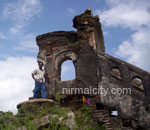

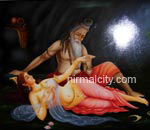

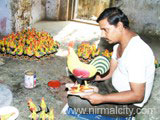
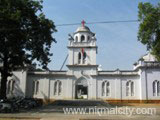

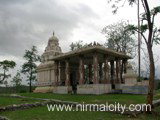

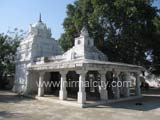





 Bus timings from Hyderabad to Nirmal and vice versa.
Bus timings from Hyderabad to Nirmal and vice versa.  Sri Krishna Residency, Hotel
(Opp: Nirmal Toys Showroom, Nirmal)
Sri Krishna Residency, Hotel
(Opp: Nirmal Toys Showroom, Nirmal)










